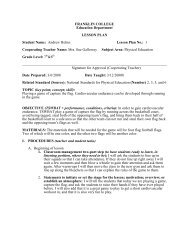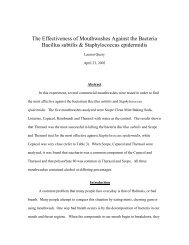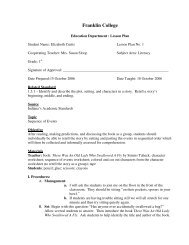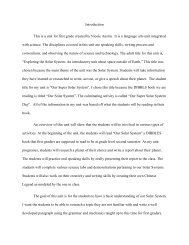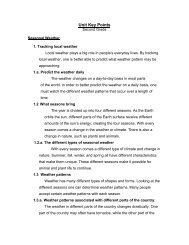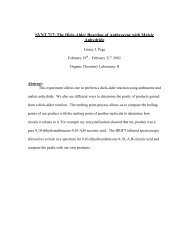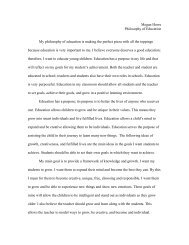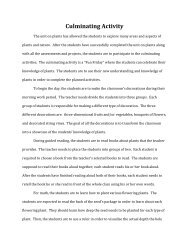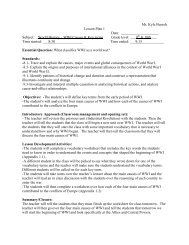Nitrating Methyl Benzoate: Electrophilic Aromatic ... - Franklin College
Nitrating Methyl Benzoate: Electrophilic Aromatic ... - Franklin College
Nitrating Methyl Benzoate: Electrophilic Aromatic ... - Franklin College
Create successful ePaper yourself
Turn your PDF publications into a flip-book with our unique Google optimized e-Paper software.
<strong>Nitrating</strong> <strong>Methyl</strong> <strong>Benzoate</strong>: <strong>Electrophilic</strong> <strong>Aromatic</strong> Substitution<br />
(d) The structure of my product is:<br />
O<br />
NO2<br />
C<br />
<strong>Methyl</strong> m-nitrobenzoate<br />
OCH3<br />
2. The resonance forms for the arenium ion formed during this reaction are as follows:<br />
O<br />
C<br />
+<br />
OCH3<br />
NO2<br />
+<br />
O<br />
C<br />
OCH3<br />
NO2<br />
<strong>Methyl</strong> m-nitrobenzoate<br />
OCH3<br />
3. The first nitration proceeds much faster than the second two because the first –NO2 group to be added is<br />
added to the isolated toluene. The methyl group on the benzene ring is an activating group. It causes the<br />
benzene ring to be more electron rich and thus, have a high reactivity. –CH3 is an ortho-para activator. So,<br />
the first –NO2 group adds to the toluene in the para-position in order to avoid steric crowding from the<br />
methyl group. The toluene has now been converted to para- nitrotoluene. The –NO2 group that is now on<br />
the benzene ring is a deactivating group, and causes the benzene ring to be not nearly as reactive as it was<br />
before the first –NO2 group was added. Thus, the second and third nitrations occur much more slowly<br />
than does the first one.<br />
O<br />
C<br />
+<br />
NO2




